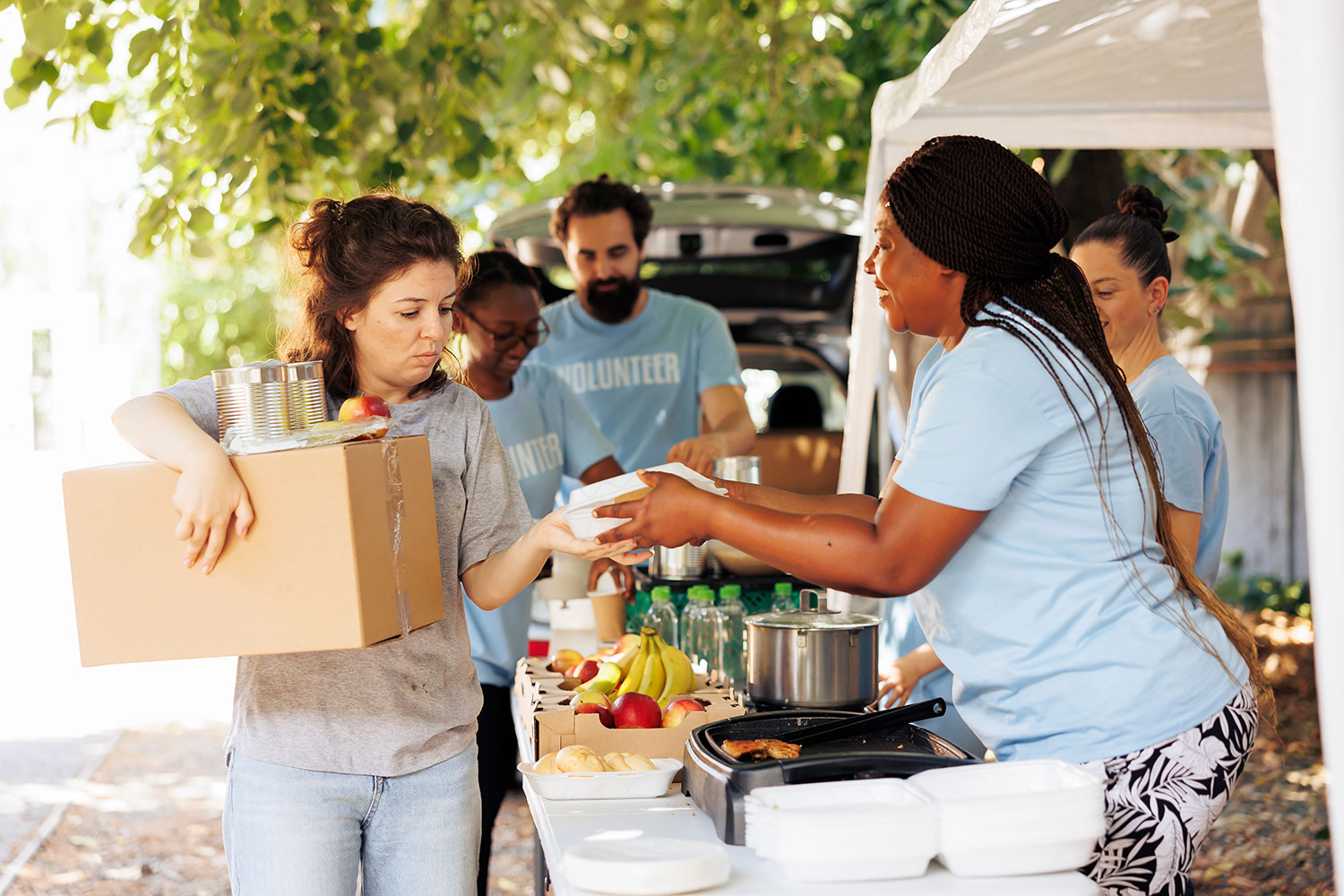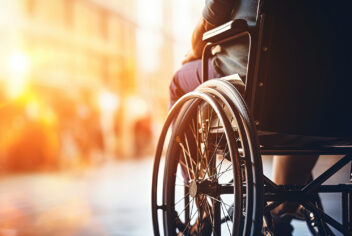“The climate emergency is a race we are losing, but it is a race we can win.…By acting together, we will leave no one behind.” — UN Secretary-General António Guterres
Four years ago, Secretary-General António Guterres remarked at the Climate Action Summit that global leaders have an obligation to take responsible steps to reverse climate change, but his message was also loud and clear that we must take care of one another during this emergency.
This is something that should resonate in each of our local communities.
As climate change presents more extreme weather patterns — from more intense hurricanes and droughts to severe polar vortices and record-breaking heat waves — we can prepare to help one another in times of crisis.
Your nonprofit may already have a lead in your community in investing in a greener future, but it is also within our missions to protect our people and our property as events happen.
As a nonprofit, your mission to your community includes protecting your staff, volunteers, clients, and communities at large — as they exist today, and as they will be for future generations.
This article will provide you with some introductory resources to help your nonprofit protect your people — and your property — during extreme seasonal weather patterns.
These resources, which focus on warming and cooling trends, can help you be prepared to serve your community and protect your nonprofit — even when temperatures are at extreme lows or soaring to record highs.
Note: If this is a new topic of interest to you, don’t miss the United Nations’ overview of What is Climate Change.
Heat: Warming Trends
When a heat wave hits, it’s important to remember that not everyone has access to basic necessities that many take for granted, like water, fans, or air conditioning. Despite this, everyone deserves to find relief from these dangerously scorching temperatures that can often be deadly.
The summer of 2023 was designated as Earth’s hottest summer on record — 0.41 degrees Fahrenheit warmer than any other on record.
With an overall increase of 1.98 F from January through September, this year is also predicted to be the warmest year on record, furthering the ongoing warming trend and triggering historic wildfires, droughts, and flooding. [KSJ(6]
Although much of the U.S. is now focused on the cooling fall and winter seasons, it’s not too early to start preparing for 2024 — and what is most likely to be another record-setting hot summer.
Cooling Centers / Cooling Shelters
In an effort to protect the most vulnerable from extreme heat, many communities offer cooling centers.
According to the Centers for Disease Control and Prevention (CDC), “A cooling center (or “cooling shelter”) is a location, typically an air-conditioned or cooled building, that has been designated as a site to provide respite and safety during extreme heat.”
Cooling centers may be permanent locations offered as temporary shelters, like a shopping mall or library. Others may be temporary locations, such as tented areas in a park or at a community pool. Often, city ordinances require cooling centers under specified conditions.
To locate a cooling center in your state, the National Center for Healthy Housing has identified locations nationwide.
Community members may also dial 2-1-1. This number works similar to 9-1-1, instead matching callers’ needs to local resources to assist them during a local crisis like a heat wave.
Consider posting this information guide from the Federal Communications Commission (FCC) for your people.
If there is not a cooling center nearby, your nonprofit can consider offering shelter or partner with other agencies to support a cooling center.
The CDC has issued this guide on The Use of Cooling Centers to Prevent Heat-Related Illness: Summary of Evidence and Strategies for Implementation.
Cold: Cooling Trends
Like heat, winter weather can often catch people unprepared. And, while the planet is warming, it’s crucial to remember that winter storms will only get more perilous.
The National Oceanic and Atmospheric Administration (NOAA) offers a Winter Storm booklet, a preparedness guide with tips to be prepared at home, work, in vehicles, and for animals.
As a nonprofit, you might consider distributing disaster supply kits, offering transportation to a warming center, and checking on your community members.
Like cooling centers in hot weather, warming centers offer emergency shelter to keep people warm, dry, and safe from dangerously cold winter conditions. When cold snaps take out the power, sub-zero temperatures can quickly become deadly.
To find warming centers in your area, 2-1-1 is a resource for your entire community. You may consider partnering with other local organizations to spread the word or setting up your own temporary warming shelter.
Urban Impact vs. Rural Impact
According to the CDC’s guide, urban areas are more likely to have relief centers within reach of community members. If your nonprofit serves in urban areas, you may consider communicating the services you provide to the most vulnerable.
If you operate in a rural community, additional opportunities for your nonprofit exist.
With a higher need for heat or cold intervention in rural communities, consider the impact you can have by establishing cooling/warming centers or offering transportation to and from those centers.
Finally, don’t forget about pets and other animals. Should your cooling/warming centers impose restrictions, contact your local animal shelters and ask if kennels are available to house those pets and other animals.
Your Property Needs Protection, Too!
While there’s never enough budget to do all the property improvements that we’d like to, it’s important for nonprofits to evaluate their current structures and properties to ensure that they can withstand the potential devastation a weather event can bring.
NPR offers some pared-down solutions that you can implement at any property, whether commercial or residential.
The Insurance Institute for Business and Home Safety is a nonprofit scientific research and communication organization offering solutions for nonprofits like yours to create more resilient communities.
To strengthen your properties against specific types of severe weather, IBHS offers a program called Fortified, which can help you learn more about reducing risks and ensuring your property can better withstand threats related to climate change.
The IBHS website also offers additional resources — including guidance for homes and businesses, disaster discussions and podcasts, and commercial loss control tools.
No matter where you are in your journey to protect your property, you can get started simply by seeking out a reputable contractor to conduct a storm-hardening assessment.
Or you can take steps to weatherize your property by sealing holes and cracks around doors and windows. Service your water heaters, heating and cooling systems, and ensure all fire and sprinkler systems are inspected and in proper working order.
If you are in a flood zone, you should know where your local distribution center for sandbags is located.
And if your property includes vehicles, be sure you know where they are stored so you can ensure they are out of the path of hail, floodwaters, and are equipped to offer drivers supplies in the event they are stuck in extreme heat or cold.
What about cost?
Providing lifesaving kits or opening operations beyond your normal scope can come at a cost. To help your nonprofit get started, you might consider applying for grants:
- Inside Philanthropy Grants for Climate Change
- Grant Watch lists foundations that offer or have offered grants for climate change
- Federal Emergency Management Agency includes listings to apply for grants for pre and post emergency or disaster-related projects, including grants through the Building Resilient Infrastructure and Communities (BRIC) program.
- Check with your current funding sources and grants to determine where you may have opportunities to extend funds for these lifesaving purposes.
In Closing
Our collective actions have upset the natural balance of the earth, and as we near the point of irreversible damage, there is still time to take actions on individual and organizational levels to win the race against the climate emergency.
In the meantime, we know there will be significant disruptions because we are already seeing them, and being prepared for the inevitable is essential.
How you prepare for a weather-related emergency may depend on who you serve in your community.
Whether you offer in-home services to disabled adults, are a youth-serving organization, or find shelter for those without homes, how can you support your community to ensure safety when weather becomes dangerous?
- Remember that not everyone has adequate or reliable transportation.
- Check on the most vulnerable persons and offer assistance.
- Don’t forget about animals: They can suffer in any of the extreme weather events.
- Have a plan for your employees, volunteers, or clients who are on-site during an emergency.
- Know to call 2-1-1 to locate help near you.
- Heat Safety Tips and Resources from the National Weather Service
- Cold Weather Safety from the National Weather Service
Other Resources
American Red Cross provides resources for disaster response.
Centers for Disease Control and Prevention (CDC) includes tips for preparing and staying safe during winter storms and weather.
Ready.gov includes resources for your nonprofit, including emergency plans, toolkits, and resources.
Nonprofit Insurance Alliance’s Risk Management Services team is here to assist you with your nonprofit’s risk management needs. Contact our team at RMS@insurancefornonprofits.org anytime for additional resources to support you in protecting your people and your property.





